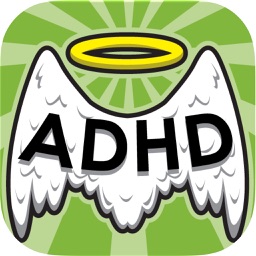Attention-Deficit/Hyperactivity Disorder (ADHD) is a neurodevelopmental condition that affects both children and adults, but it is often recognized and diagnosed more frequently in boys than in girls. This disparity can be attributed to differences in how ADHD presents in females compared to males. Understanding how ADHD manifests in girls is crucial for accurate diagnosis and effective management. Here’s a comprehensive guide to recognizing ADHD in girls, highlighting key symptoms and signs.
Understanding ADHD
ADHD is characterized by persistent patterns of inattention, hyperactivity, and impulsivity that interfere with functioning or development. While the condition affects individuals differently, the core symptoms remain consistent: difficulty sustaining attention, impulsivity, and excessive activity. However, symptoms of ADHD presents in diverse ways, and girls often exhibit symptoms differently than boys.
ADHD in Girls: Unique Presentation
Inattentive Symptoms
Girls with ADHD often show more inattentive symptoms rather than hyperactive or impulsive behaviors. These symptoms may include:
Difficulty Sustaining Attention:
Girls may struggle to maintain focus on tasks or activities, especially those that are uninteresting or repetitive. They may appear daydreamy or easily distracted.
Forgetfulness:
Frequently forgetting daily tasks, appointments, or deadlines is common. This can be mistaken for a lack of responsibility, but it often stems from underlying attention difficulties.
Disorganization:
Problems with organizing tasks and activities can lead to messy workspaces and missed assignments. This disorganization is not necessarily due to a lack of effort but can be a result of ADHD-related difficulties with executive function.
Hyperactive Symptoms
Hyperactivity in girls with ADHD may be less overt compared to boys. Instead of the classic signs of running around or climbing, girls might display:
Restlessness:
They may fidget, shift in their seats, or appear to be in constant motion. This restlessness can be subtle but is indicative of internal agitation.
Talkativeness:
Girls with ADHD might talk excessively, interrupt others, or have difficulty waiting their turn in conversations. This verbal hyperactivity can be a form of their hyperactive tendencies.
Impulsive Symptoms
Impulsivity in girls can manifest in ways that differ from the more outwardly disruptive behaviors often seen in boys:
Girls might make hasty decisions without fully considering the consequences, such as spending money impulsively or engaging in risky behaviors.
Quick emotional responses, such as outbursts of anger or frustration, can be a sign of impulsivity. This can sometimes be misinterpreted as moodiness or over-sensitivity.
Social and Emotional Challenges
In addition to the core symptoms of ADHD, girls often face unique social and emotional challenges:
Social Skills Difficulties
Girls with ADHD may have difficulty picking up on social cues or understanding social norms. This can lead to challenges in forming and maintaining friendships.
They might feel overwhelmed in group settings or struggle to navigate complex social dynamics, contributing to feelings of isolation.
Diagnosing ADHD in Girls
Accurate diagnosis of ADHD in girls requires a comprehensive evaluation, including:
Clinical Interviews:
Detailed interviews with the girl, her parents, and teachers can provide insight into her symptoms and how they affect various aspects of her life.
Behavioral Assessments:
Observations of behavior in different settings (e.g., school, home) are essential to understand the full scope of her symptoms.
Rating Scales:
Standardized ADHD rating scales and questionnaires can help quantify symptoms and compare them with typical developmental expectations.
Consideration of Comorbid Conditions:
A thorough evaluation should also assess for other conditions that may overlap with or mimic ADHD, such as anxiety disorders or learning disabilities.
Strategies for Support
Supporting a girl with ADHD involves a multifaceted approach:
Strategies such as organizational aids (e.g., planners, reminders) and behavioral modification techniques can help manage symptoms.
Individualized education plans (IEPs) or 504 plans can provide accommodations in the school setting, such as extended time for assignments or a quiet workspace.
Cognitive-behavioral therapy (CBT) and other therapeutic approaches can address emotional challenges, build coping skills, and improve self-esteem.
Educating family members about treatment of ADHD and involving them in treatment planning can foster a supportive home environment.
In some cases, medication may be prescribed to help manage symptoms. This decision should be made in consultation with a healthcare provider.
Conclusion
Recognizing ADHD in girls requires an understanding of the subtler ways in which the disorder can manifest. By paying attention to symptoms of inattention, subtle hyperactivity, and impulsivity, as well as the associated social and emotional challenges, parents, educators, and healthcare providers can better support girls with ADHD. Early diagnosis and tailored interventions can make a significant difference in managing the condition and helping girls thrive academically, socially, and emotionally.

